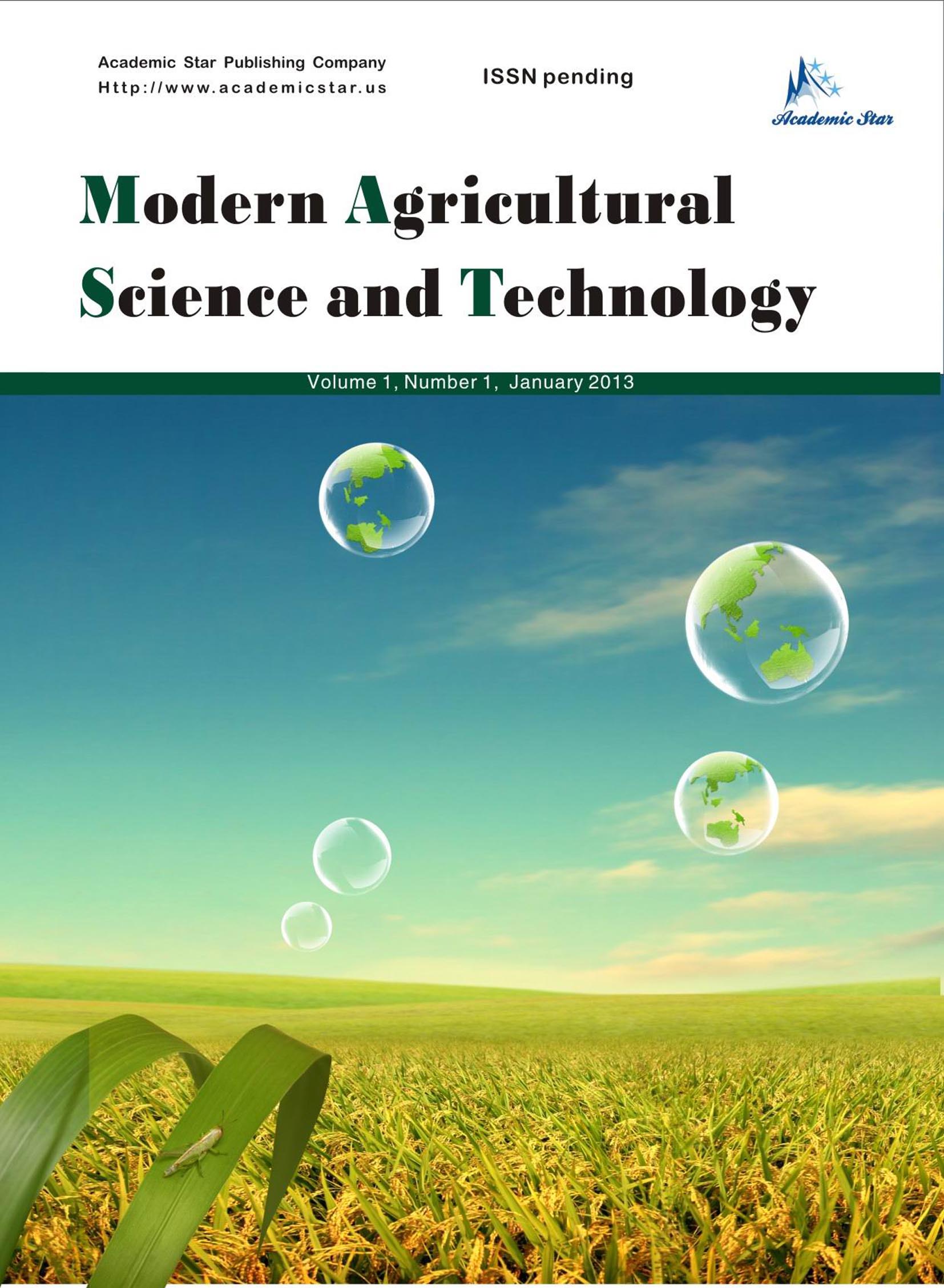
- ISSN: 2375-9402
- Modern Agricultural Science and Technology
Accumulation of Total Nutrients, Dry Matter, and Phytochrome Content in Boesenbergia Stenophylla R. M. Smith as Affected by Different Light Conditions
2. Department of Crop Science, Faculty of Agriculture, Universiti Putra Malaysia, Malaysia
Abstract: A study was conducted to determine the best agronomic practices for the cultivation of jerangau merah as a new medicinal crop. Jerangau merah is scientifically known as Boesenbergia stenophylla is a ginger plant that is highly endemic to the Borneo Highland. This understorey herb grows in cluster and under the heavy shades of forest canopies and perceived only the sunflecks that pass through the forest canopies. Jerangau Merah has been consumed by the locals for its medicinal values since decades ago. Generally, B. stenophylla is well known for its function as antidote for alcohol. Moreover, the B. stenophylla is also beneficial for rheumatic pains, remedies for stomachache and toothache and as antiseptic wash as well. This herb is not propagated by the locals due to its sensitivity to sunlight and lack of agronomic information for B. stenophylla. Harvesting it from their natural habitat however, seen the decline it its population size hence cultivation is essential. This paper aimed to determine the total nutrients, dry matter yield and phytochrome content of Bosenbergia stenophylla R.M. Smith under different light regimes. A study for determining suitable planting media for B. stenophylla was conducted at Universiti Putra Malaysia (UPM). The treatments are: i) (M1) with the ratio of 3:2:1 top soil: sand: organic matter, media ii) (M2) consists of soil mixture 3:2:1 placed in water-logged polyethylene bags and media iii) (M3) contained only leaf litters. The results showed that the herbs showed significant higher number of shoots and leaves in the common soil mixture. But, better root development in media containing leaf litters. The study proceeded with field experiment at Ba’Kelalan to determine the effect of different shade level and fertilizing regimes on growth. B. stenophylla was cultivated under two different levels of shade cloths: 70% and 90% level of shade and different fertilizing regimes (T1 as control, no fertilizer applied to the plants; T2, chicken dung; T3, NPKMg and T4, mixed of chicken dung and NPKMg). The study for determining the effects of different shade level and fertilizing regimes on seedling’s growth which conducted at Ba’Kelalan in factorial randomized completely blocked design (RCBD). The data collected for 9 weeks of planting which include nutrient content in soil, leaf, PAR and phytochrome content and growth parameters. Regarding the nutrient uptake, the results showed no interactions between fertilizing regimes and shade levels. There were no significant different in nutrient elements except for magnesium and potassium. Magnesium is essential for the formation of chlorophyll which ensure efficiency of photosynthesis when under higher light intensity. Among all the fertilizer treatment, it was showed that chicken dung amendment has higher nutrient uptake. Thus, it is recommended chicken dung should be added into the NPKMg for better nutrient uptake. Further study on suitable fertilizer rate apply to B. stenophylla should be taken into consideration. Moreover, plants cultivated under 70% have were higher and have higher dry matter yield than those plants cultivated under 90%. The result also revealed that there was significant different in chlorophyll content of B. stenophylla cultivated under 70% which treated either with chicken dung and NPKMG respectively. However, plants under 90% have higher chlorophyll content than those under 70%. Based on the results, plants under 70% shade was taller than those under 90% and there were significant differences in height among treatments under 70%. It was observed plant treated with NPKMg was taller. This study showed that shade and fertilizers significantly affected the dry matter yield of B. stenophylla. Moreover, adding NPKMg to the treatments yields more dry matter content of jerangau merah. As for phytochrome content, there was no significant effect of fertilizer on phytochrome content. However, there was significant difference among the shade levels. 90% shade showed higher phytochrome content than those under 70%. In overall, both shade and fertilizer are important in cultivation of Jerangau Merah. 70% shade was observed to have significant effects on growth of jerangau merah and also more economical compared to 90%. Moreover, combination of organic matter and NPKMg also promote the growth of jerangau merah enhance the nutrient uptake efficiency of jerangau merah. However, further investigation of suitable fertilizer and application rate are required to determine suitable fertilizer for jerangau merah and application rate for optimum growth of jerangau merah.






